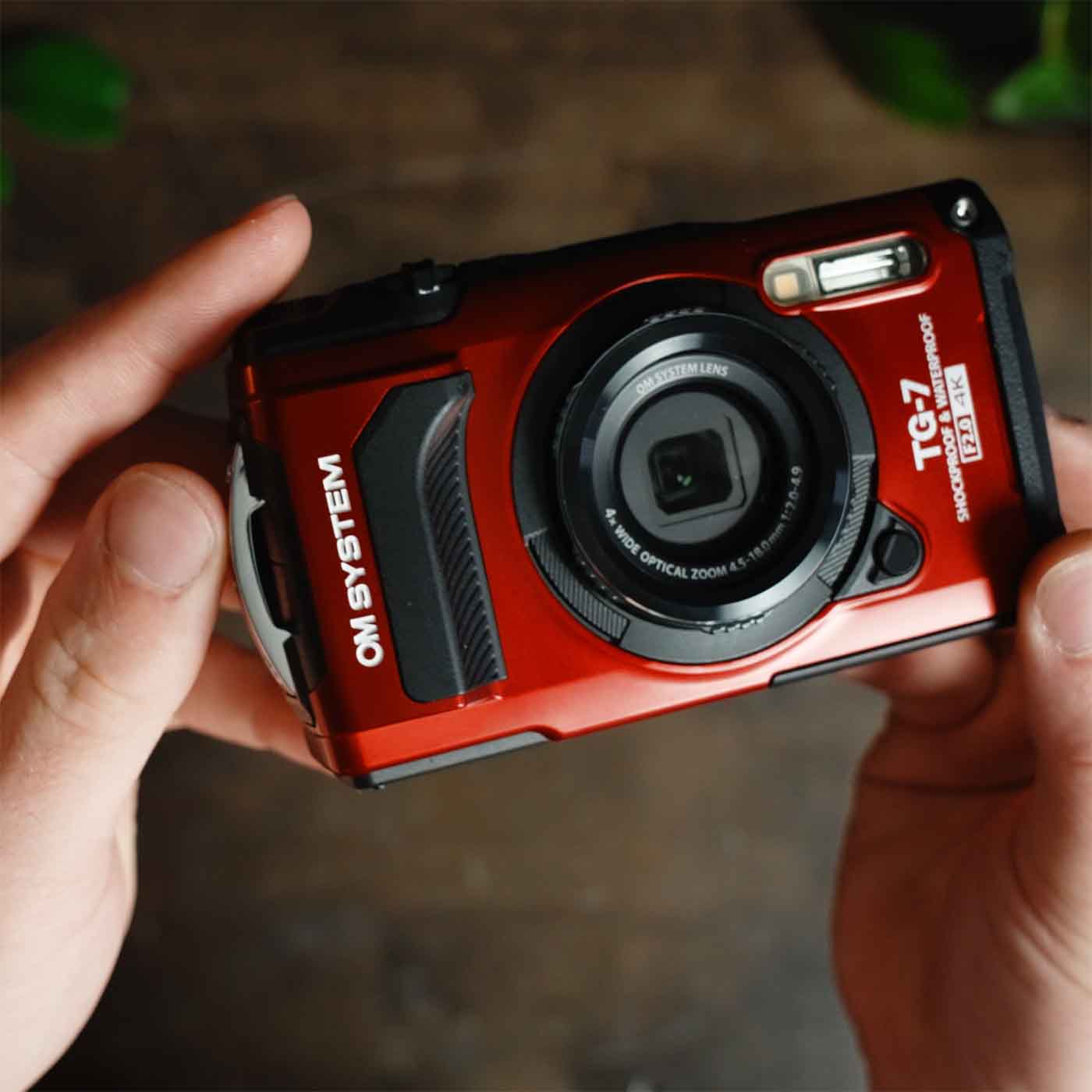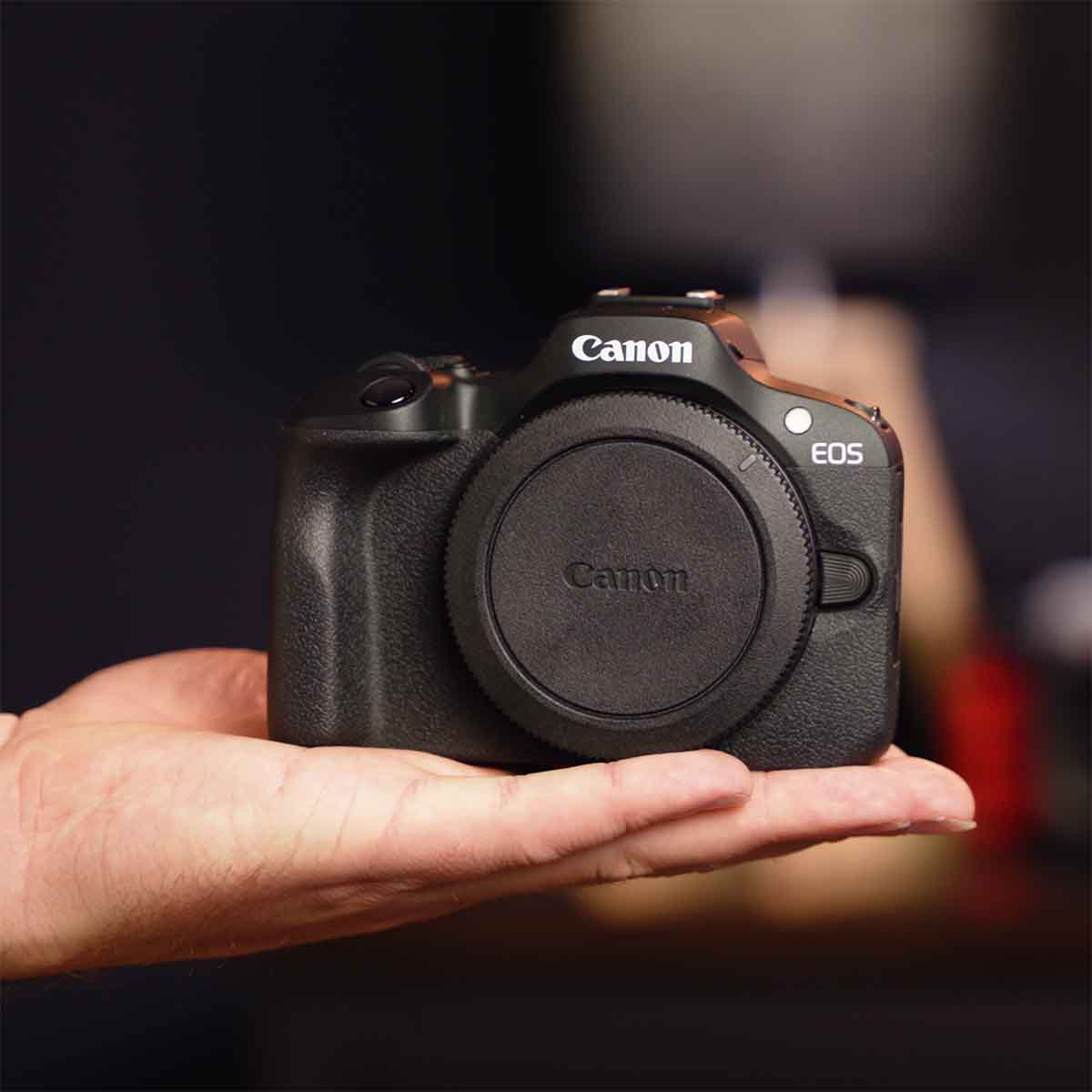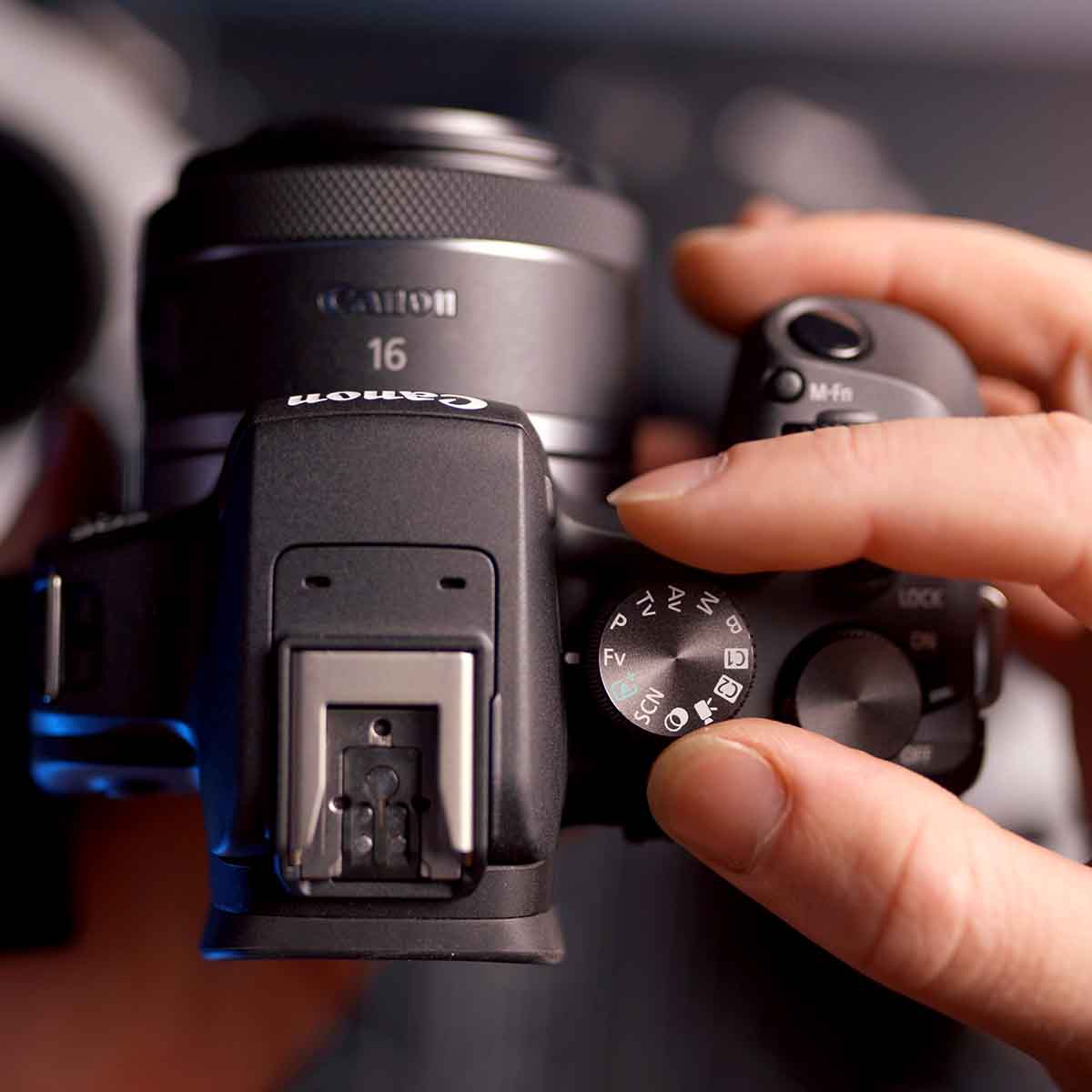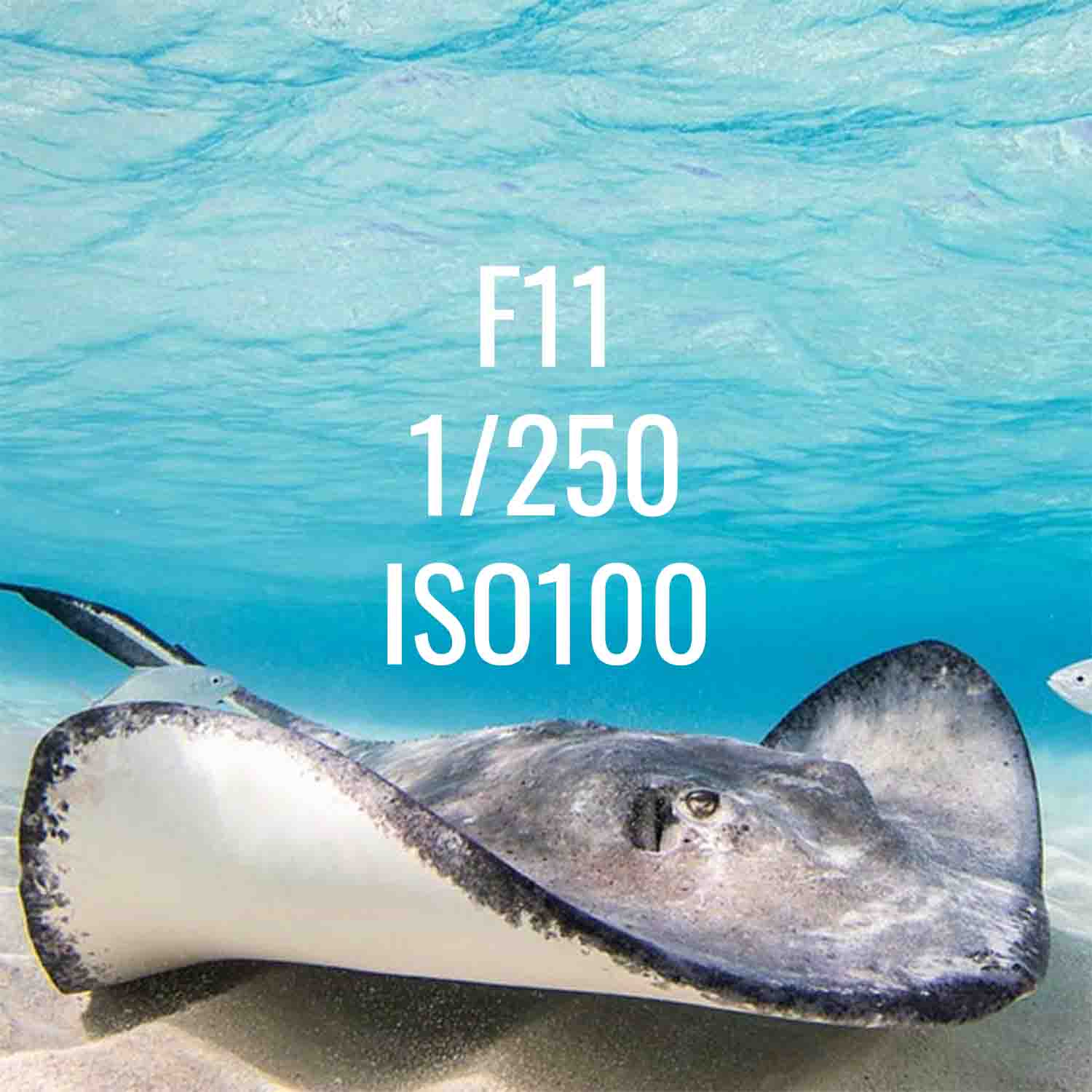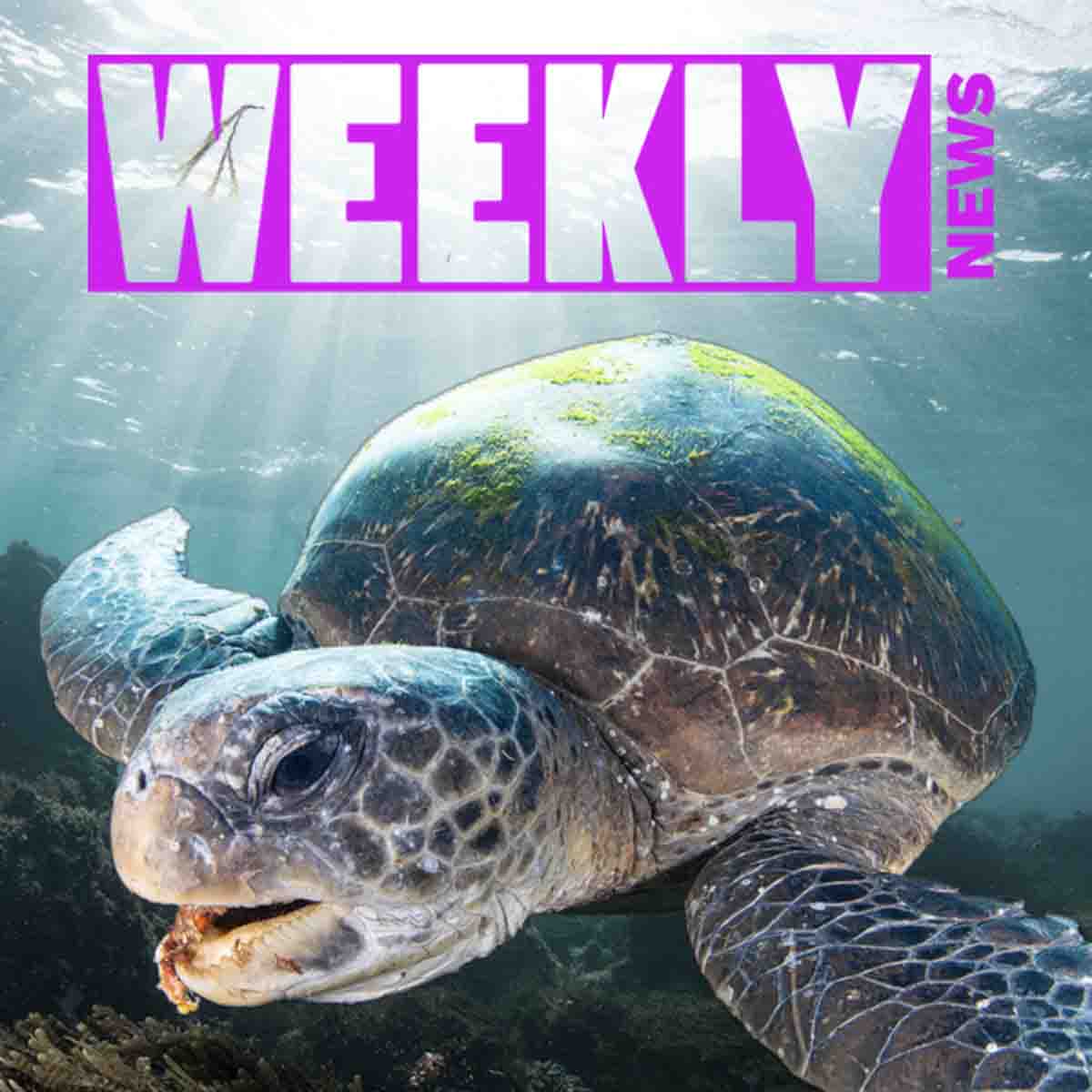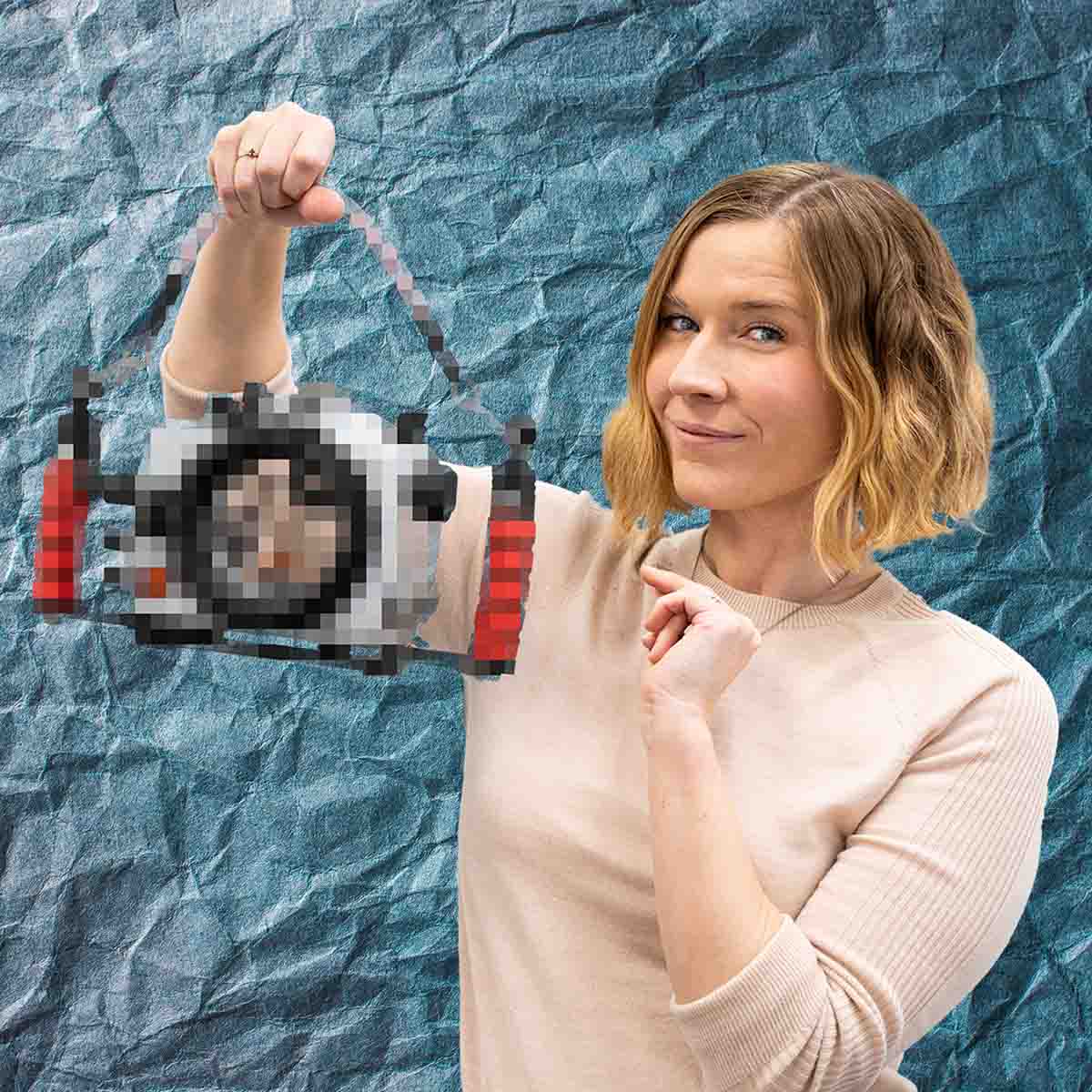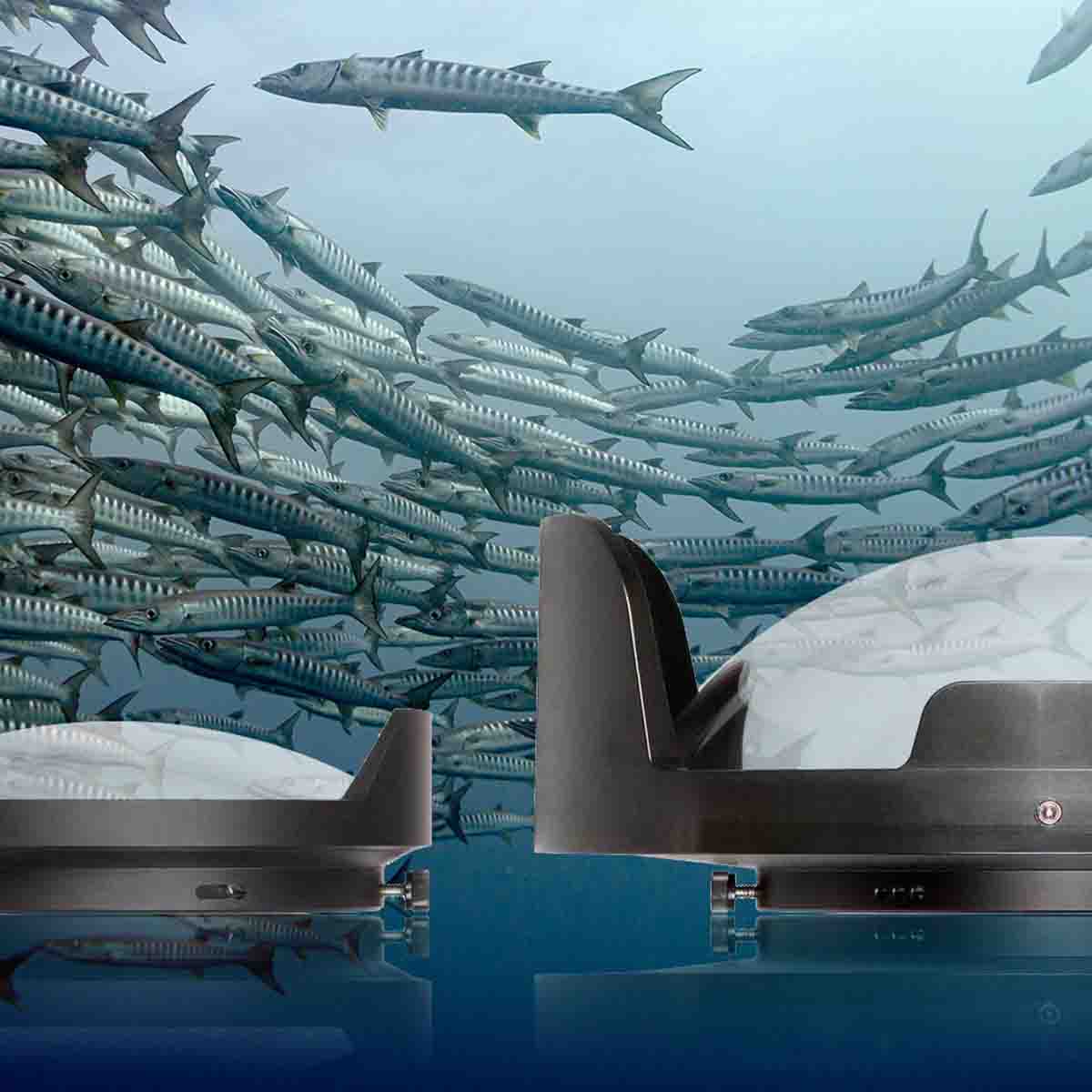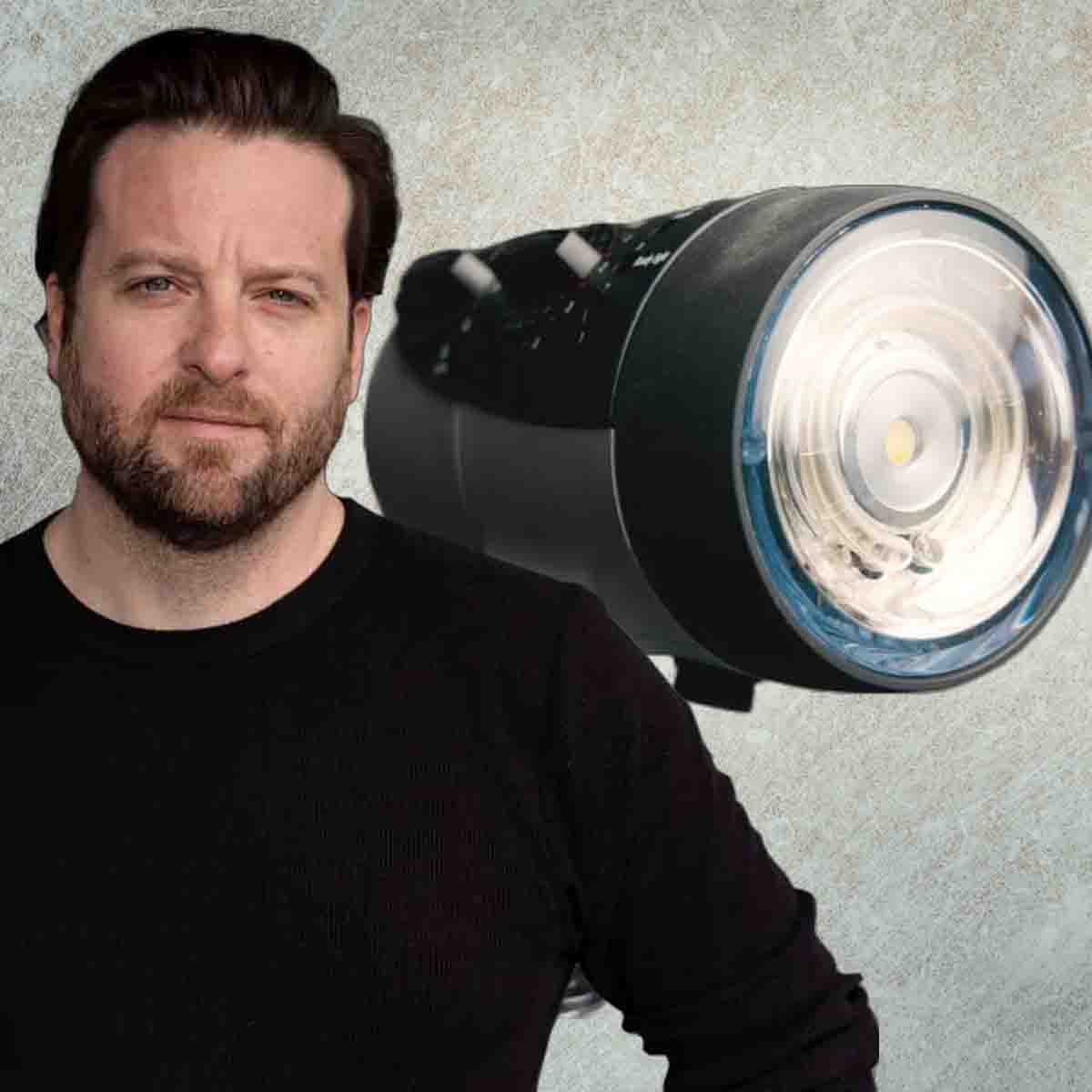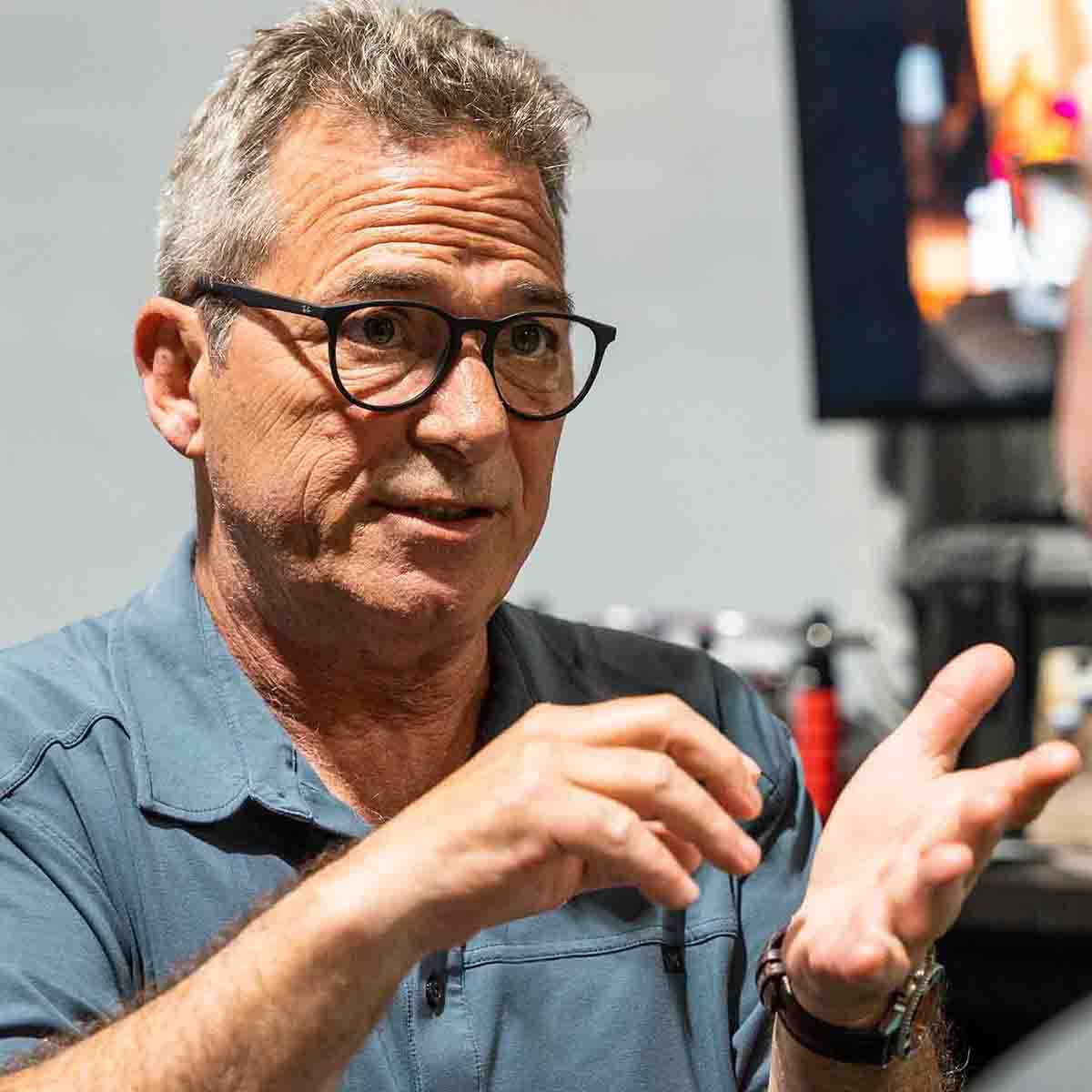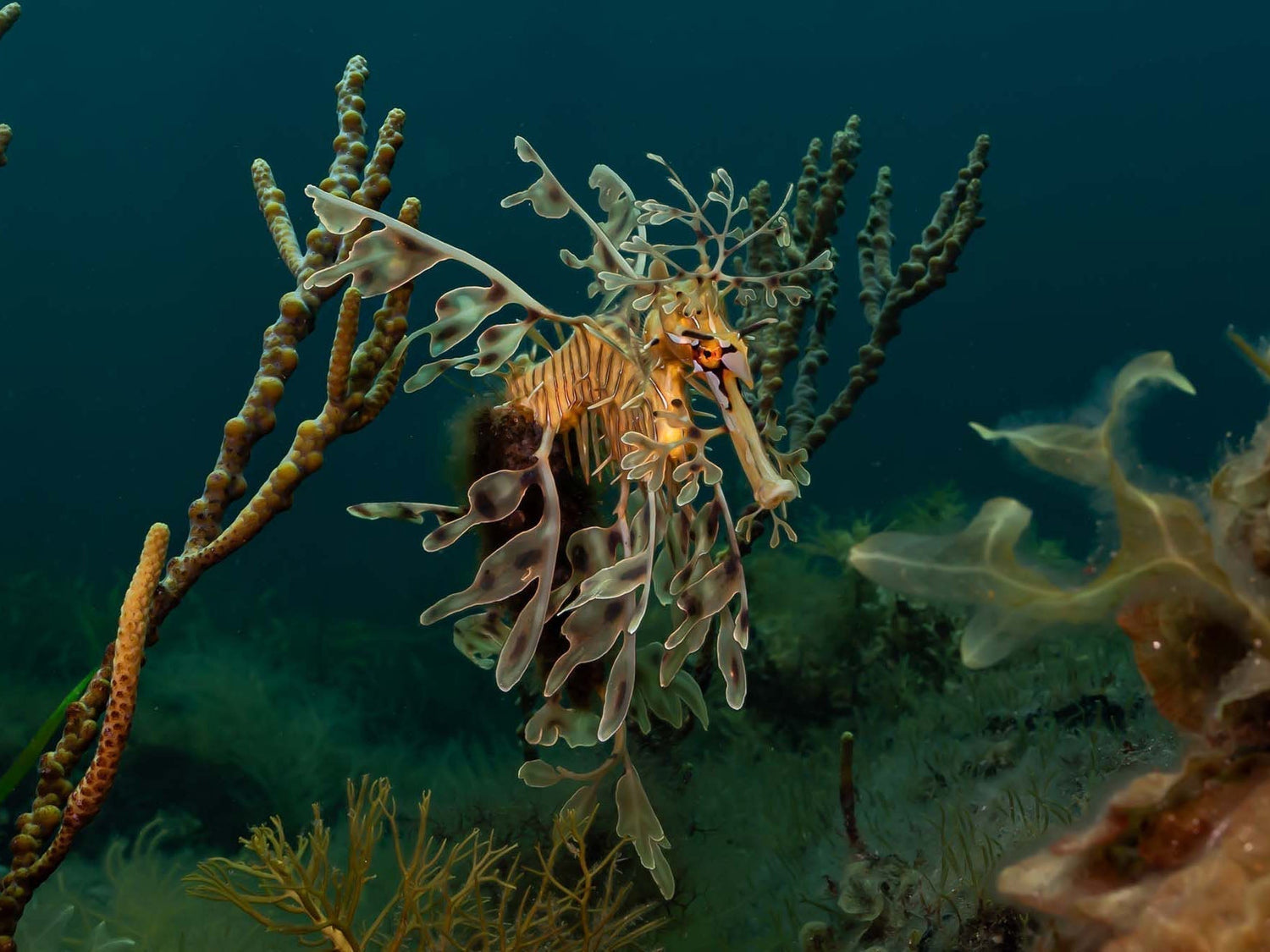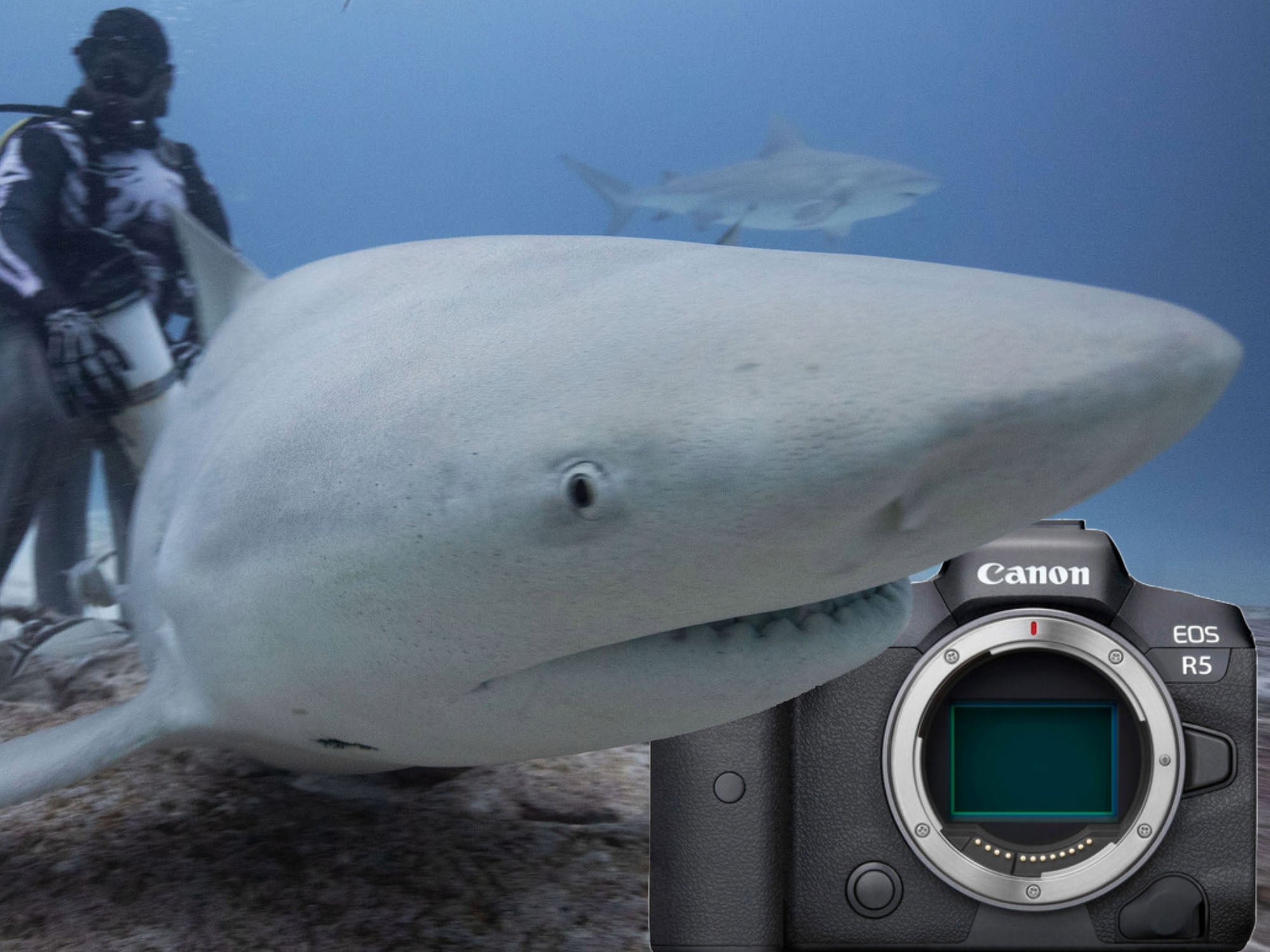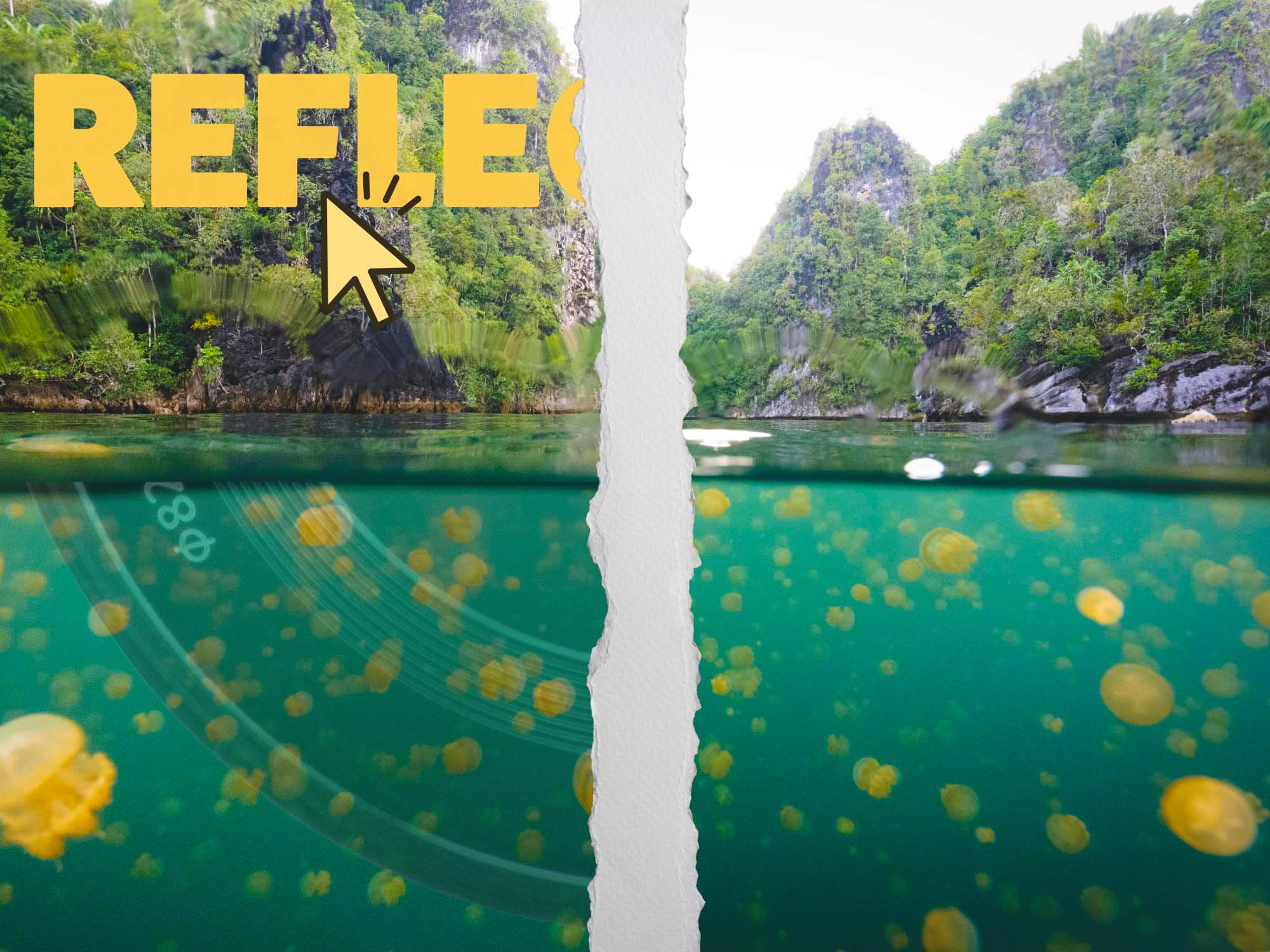By Rowan Dear
The Leafy Sea Dragon is endemic to Australian waters, and are found primarily off South Australia, Victoria and Western Australia. We are fortunate to have many sites where you can go direct from the shore, and find them in relatively shallow depths (around 10meters or 32feet).
My favourite site is in South Australia at a spot called Rapid Bay, where the Dragons hang out at an old Jetty, often around the legs next to the Jetty or out wider amongst the seagrass. This site is a really beautiful spot, where you can also see multiple other species such as giant cuttlefish and blue devils, as well as the photogenic nature of the jetty itself.
The Leafy Sea Dragons here are also slightly different to those typically found in Western Australia, as the ones over there don't usually have the large head dress that their South Australian cousins have. In my opinion the larger head dress is definitely more photogenic and unique looking.

45º angle shot • f/13 • 1/100 • ISO 400 • Sony a7 IV + Sony FE 90mm F2.8 Macro G OSS © Rowan Dear
How to Find the Masters of Camouflage
Whilst they can grow up to 35cm (14 inches) in length, the leafy sea dragons are not always easy to spot. I have been photographing one, whilst another is 10cm (4 inches) to my right and I have not noticed it for some time. They are the masters of camouflage so you really need to have your eyes tuned in to what you are looking for.
Luckily with the jetty there are plenty of reference points, so if you find them on one dive, you can hopefully locate them again once you jump in for your second dive. Although whilst they may not have moved far, there are some times where we would take 20-30 minutes to find them a few metres from where we saw them on the previous dive.
Planning The Shots You Want
Once you have found a leafy sea dragon, they aren’t going to swim away from you like a shark, or a manta ray, etc. so this allows you plenty of time to get the shots you want, and possibly try some more experimental stuff. But, be aware of other divers though, who will also want to spend some time with them.
Here are my 5 favourite shots to take of the leafies:
1 | Classic Wide Angle, Side on Shot
Depending on where you find them, you can possibly get a nice wide angle shot with the Jetty in the background or of the seagrass and other foliage the leafies like to hide in.
This is the easiest shot to get, but also takes some patience as the leafies will invariably turn away from the camera, meaning a side on profile shot requires a little less effort to get than the other shots, all you need to do is get your angles and settings right.
Top Tip: Get low, and shoot slightly upwards to make the leafy appear bigger.

Side on shot • f/8 • 1/160 • ISO 400 • Sony a7 IV + Sony FE 16-35mm F2.8 GM © Rowan Dear
2 | Wide Angle, 45º Angle of the Leafy.
For wide angle, this is my favourite profile of the leafies where you get to see their face and also their bodies so you get the best feel for what this unique creature looks like.
Not an easy shot to get, it often takes a lot of manoeuvring to get into the right position, but even then, the leafy may not want to make it easy for you.

45º angle shot • f/11 • 1/160 • ISO 200 • Sony a7 IV + Sony FE 16-35mm F2.8 GM © Rowan Dear
3 | Slow Shutter, Motion Blur Wide Angle or Macro
If you have the main shots you want, its quite nice to try something else and get some slow shutter motion blur shots of the Leafies in the sea grass.
I was staring off at 1/20 shutter speed and f/22, ISO 200. My strobes were on 2/3 power.
Obviously depending on the light, you will need to adjust your settings. For me I would adjust my aperture slightly, but you can also adjust your ISO accordingly. As you press the shutter, you can also pan the camera at the same time to create that extra motion blur.

Motion blur shot • f/22 • 1/20 • ISO 200 • Sony a7 IV + Sony FE 16-35mm F2.8 GM © Rowan Dear
4 | Macro, Close Up Camouflage Shots
It's nice to shoot some tight close-up shots of the leafies hiding in between the Kelp and Seagrass and playing around with your aperture. The below shots were taken on Sony FE 90mm F2.8 Macro G OSS and you can see the details on the Leafy and then some nice depth of field as well.

Camouflage shot • f/2.8 • 1/100 • ISO 100 • Sony a7 IV + Sony FE 90mm F2.8 Macro G OSS © Rowan Dear

f/6.3 • 1/100 • ISO 250 • Sony a7 IV + Sony FE 90mm F2.8 Macro G OSS © Rowan Dear
5 | Macro, Front-On Face Shot
My favourite shot, but also the most challenging. Whilst patience will sometimes mean the dragons are facing you, a lot of the time they will be angled downwards, or slightly to one side. So, the front on, upright shot was way more difficult to achieve than I had initially expected it would be
This photo was taken on a night dive, using a red video light to focus on the leafy and to not scare it away. This allowed it to become more comfortable with me and gave me more opportunities to get that front on shot. It still took many missed/almost shots, but it was all worth it.

Macro front-on face shot • f/18 • 1/80 • ISO 320 • Sony a7 IV + Sony FE 90mm F2.8 Macro G OSS © Rowan Dear
Some other cool behaviours which are nice to witness include:
• The Sea Dragons hunting for mysid shrimps, where they almost suction them up using their long snout. At times it was nice to put the camera aside and watch the leafies closely with your own eyes instead of through the lens of the camera.
• Male Leafy Sea Dragons carrying eggs on their tails. This one below had a lot of moss growing over the eggs, so they appear quite green when they would more often be more orange in colour.
• Pairs of Leafy Sea Dragons often hang out together, (presumably mating pairs) and its nice to get photos of two of them together.

Male leafy with moss growing on the eggs on its tail • f/11 • 1/125 • ISO 320 • Sony a7 IV + Sony FE 16-35mm F2.8 GM © Rowan Dear
Conclusion
The Leafy Sea Dragons are a truly unique creature, with so many incredible features that you could spend hours photographing them and still spot parts of them you had not noticed before. As they don't move so much, they give you a perfect chance to try new things, plan your shots and get some incredible images.
I would highly recommend hiring a local guide for your first dive, to get a good understanding of the terrain and their habitat and then that will allow you to spend more time photographing them and less time looking for them.

Front-on shot • f/9 • 1/100 • ISO 400 • Sony a7 IV + Sony FE 90mm F2.8 Macro G OSS © Rowan Dear
My Top 5 Tips
1 | Stay low. Get down and look at angle up towards your subject and make them stand out and fill your frame.
2 | Experiment. Try new techniques, try a variety of styles, different lenses and compositions of shots.
3 | Get your angles right. Look for those 45 degree angles, really make The Dragons pop and bring out all their most unique features.
4| Be Patient. Don't rush the leafies, take your time and wait for them to become more comfortable with you and then you will be able to get the shots you want.
5 | Hire a guide for your first dive. spend more time photographing and less time searching.
Additional Viewing
Sony a7 IV Underwater Housing Photos and Review
Sony FE 90mm F2.8 Macro G OSS Review and Results
Sony FX3 Underwater Cinematic // Leafy Seadragon in South Australia [VIDEO]
Super Macro Underwater Photography Techniques
An Insider's Guide to Diving the Great Barrier Reef, Australia

Rowan Dear grew up in Wales, UK where he fostered a love of the outdoors and discovering new animals to identify. In 2010 he relocated to Australia and seven years later overcame his fear of water and took an Open Water course. After a few years of diving in Australia, South Africa, Thailand, and the Philippines, Rowan purchased an underwater housing for his camera and his passion for underwater photography truly blossomed. He took a course with Matty Smith which taught him how to break free from Auto mode and grasp the principles of composition. His love of discovering new animals and the outdoors has remained intact and has informed much of his photography. Rowan continues to travel the world shooting underwater and remains steadfast in learning new photography techniques and building upon his solid photography foundation. Follow Rowan on Instagram @rdearphotography and visit his website www.rdearphotography.com to learn more.

